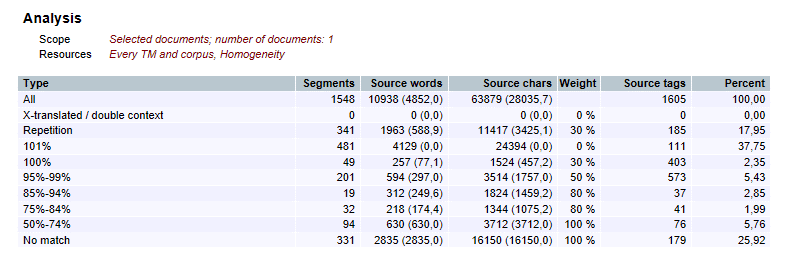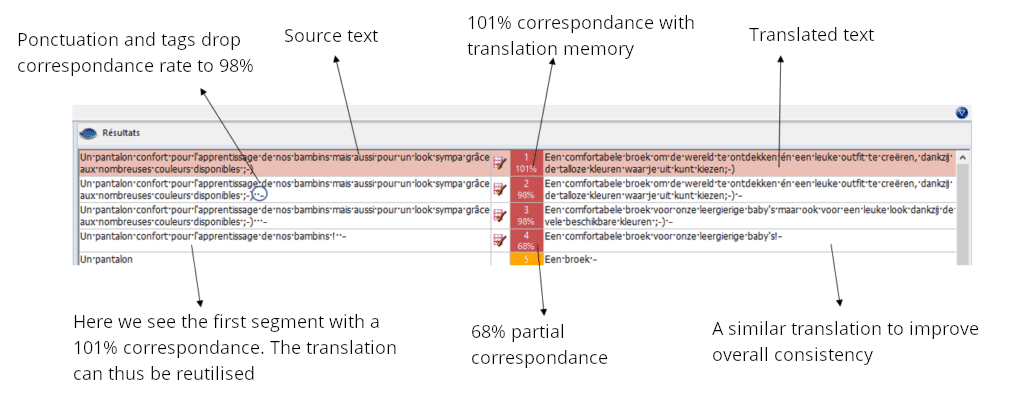Looking to get some documents translated? It may behoove you to know a bit about fuzzy matches in order to ameliorate the process. Here, we’ll give you a quick and clear explanation so that you might better understand what goes on behind the scenes of a translation.
In a vast majority of cases, translators will use what are known as Computer Assisted Translation (CAT) tools, which are pieces of software that enable the translator to reuse translated content and improve overall consistency. This means saving time and, ultimately, money over the course of numerous requests.
During the analyses phase, the software compares each segment in the document to those within the same document and in the translation memory. The same phrase occurring in the selfsame document is simply listed as a “Repetition”. A 101% correspondence is an “in context” repetition, meaning that the segments before and after are also the same, whereas a 100% correspondence is a single-segment repetition. Anything below a 100% match rate is referred to as a “fuzzy match”.

The software will go through and find any partial correspondence between segments in the new document, full sentences or partial alike. Just like with complete repetitions, partial repetitions allow translators to save time when translating certain recurring expressions in the same way. Thus, your documents are better harmonized and translated, all the while requiring less turnover time.
Fuzzy matches appear differently within memoQ. First, let’s take a look at how they appear when the analysis is carried out. The table lists the total number of words, repetitions, and partial correspondence.

What impact will this have in terms of pricing? Well, if you notice the number in parentheses in the table (in the source word column), this shows the weighted word count applied after verification of percentage of correspondence with the translation memory. Still not completely clear? No worries! At the end of the day, it just means the more similar the translation is to past translations, the less you pay! Our article on weighted word counts will help shine a bit of light on our calculation methods of the various prices.
Outside of the price, what application do fuzzy matches have during the translation? As you can see in the image below, for each segment, usually a sentence, the program will display the most similar results it finds. The translator will thus be able to see how previous segments were translated and thus find a similar way to translate the new sentence to improve overall consistency between documents.

Now that you know a bit more about what happens behind the scenes, why not ask for quote for your project? You can follow this link and rest assured that one of our project managers will get back to you with a precise estimate according to your needs!

